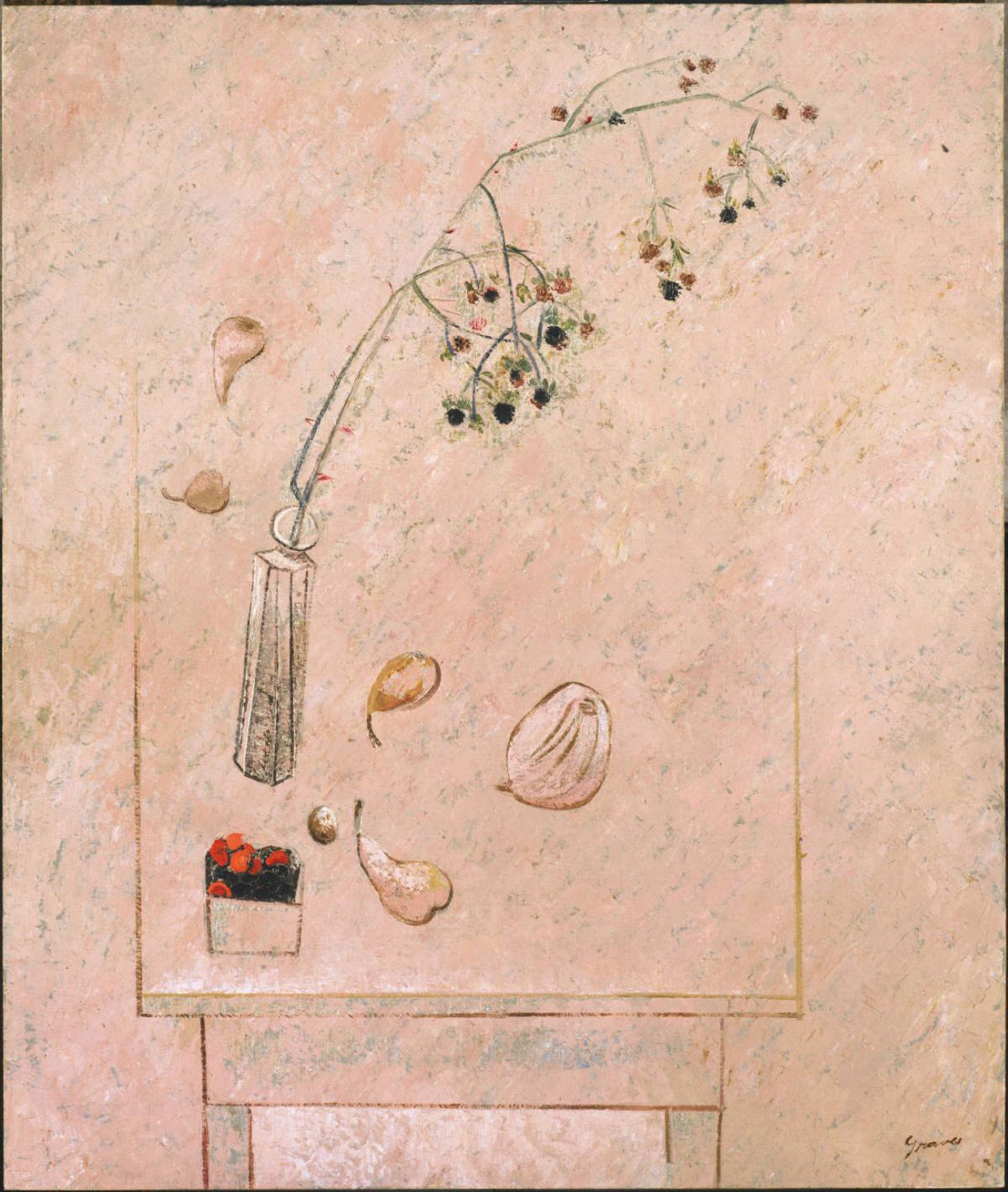August Still Life
Morris Graves ( 1952 )

Morris Graves’s art was steeped in Far Eastern philosophies like Zen Buddhism and Taoism, and also shows commitment to the Surrealist credo that art should reveal the creator’s subconscious and serve as a means of psychic exploration. Graves painted natural and recognizable forms that carried spiritual meaning. For his still lifes, he also chose objects that convey symbolic content. InAugust Still Life, the scale of the painting juxtaposes its delicate color; simplified forms elegantly contrast the straight and curving lines. Graves asymmetrically arranged the painting, inscribing within the boundaries of an implied tabletop, the fruits, flowers, and vegetables of the picture, which seem to float within the canvas, and yet are held in place by the outline of a table inscribed at the bottom center of the canvas.
Duncan Phillips saw Graves’s work for the first time at the Museum of Modern Art in 1942. Having traveled in Asia himself, Phillips was attracted to the artist’s style, which he believed “transcended cultural barriers.” Writing in support of Graves’s application for a Guggenhiem fellowship to study in Japan in 1946, Phillips called him “the most original and inspired of all our young American painters …. a seeker of truth, a thinker, and a philosopher.”